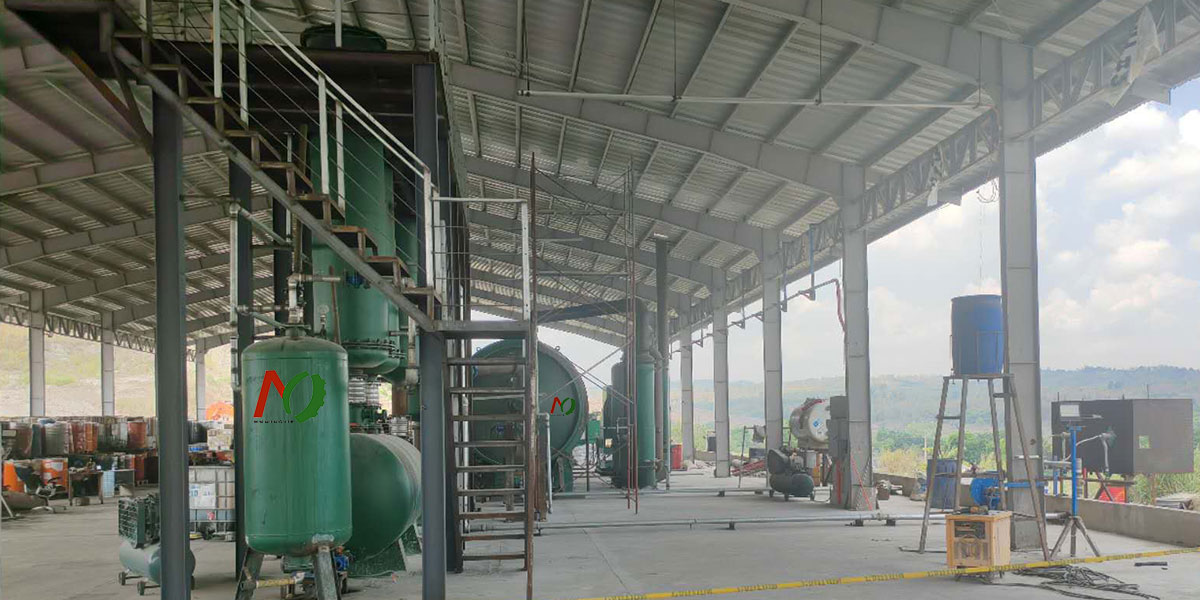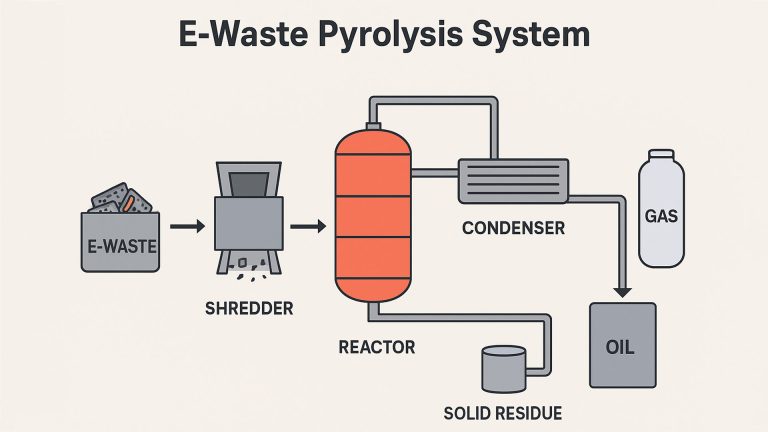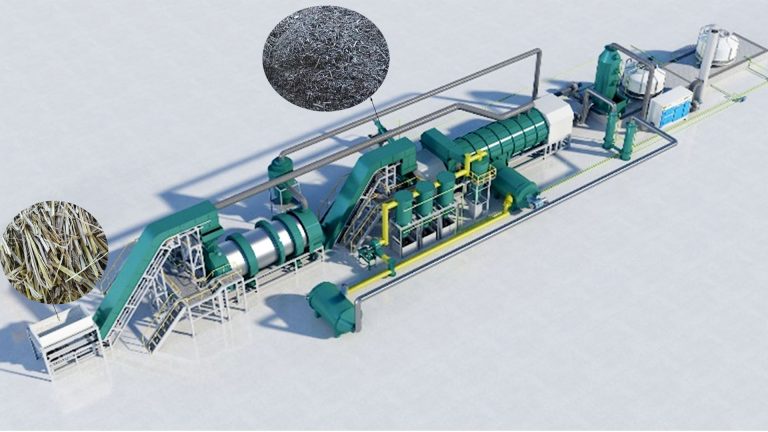As an innovative solid waste treatment solution, plastic pyrolysis is becoming a key force in solving plastic pollution and resource crises. The pyrolysis plant for waste plastic plays a crucial role in environmental protection and resource utilization.
The pyrolysis plant for waste plastic consists of various systems, including feeding system, pyrolysis reactor, heating system, condensing system, slag discharge system, gas purification system, and PLC control system. These systems work together to achieve the magical transformation from waste plastic to fuel oil.
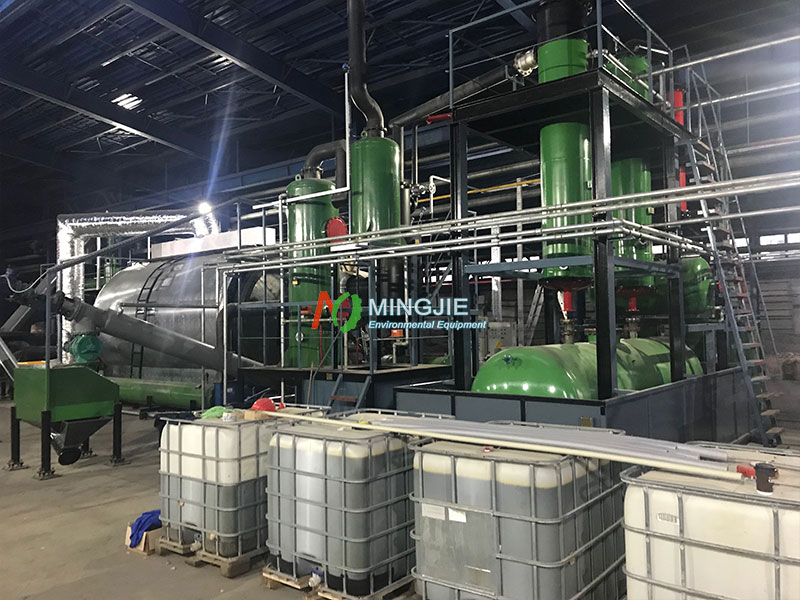
Plastic Waste to Fuel Oil Process
Before entering the plastic pyrolysis plant, collected waste plastics undergo pre-processing. This involves sorting, cleaning, and shredding to ensure efficient pyrolysis.
The treated plastics are placed in a pyrolysis reactor. Heating is performed in an oxygen-free or oxygen-deficient environment using a heat source such as electric or gas. The temperature is typically controlled between 300°C and 900°C, a range that effectively breaks down the long-chain molecules in the plastic.
After the pyrolysis reaction is complete, the gases and oils produced are condensed into liquids. The solid residue, carbon black, remains at the bottom of the reactor. The non-condensable syngas is further purified for recovery.
Waste Plastic Pyrolysis Plant Cost
The equipment procurement costs for waste plastic pyrolysis plants are high. A complete set of continuous waste plastic pyrolysis equipment ranges from millions to tens of millions of dollars. This represents a significant initial investment for many companies.
Plastic pyrolysis technology is now mature, and several countries have purchased Mingjie plastic pyrolysis equipment to process waste plastics, including Pakistan, the Philippines, Poland, Thailand, and Romania.
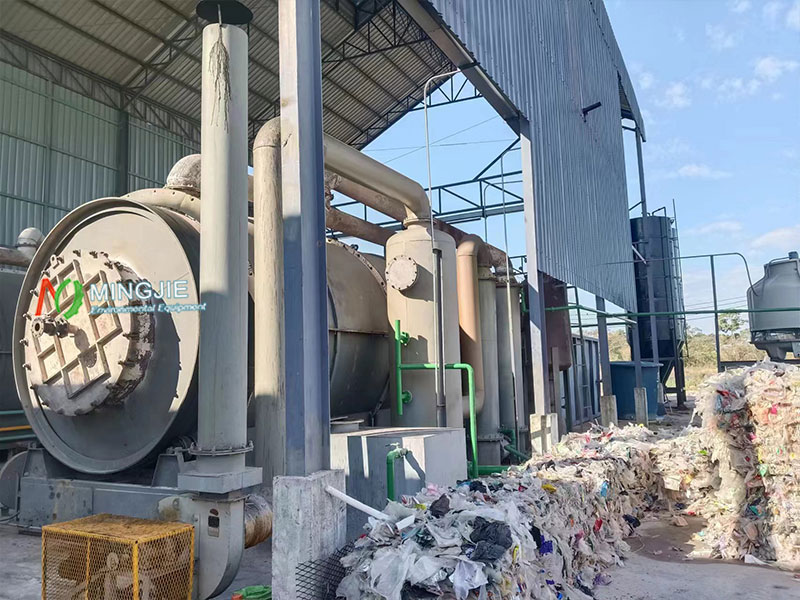
The high costs of pyrolysis and purification equipment impact the project’s economic viability to a certain extent. However, in the long run, plastic pyrolysis plants bring significant benefits to both the company and the environment.
Through continuous technological innovation and expansion, plastic pyrolysis plants are becoming a vital force in addressing plastic pollution and resource crises. These pyrolysis plants are playing an increasingly important role in environmental protection, resource utilization, and economic development.
Important Role of Pyrolysis Plant for Waste Plastic
From an environmental perspective, pyrolysis plant for waste plastic significantly reduces the environmental pollution caused by plastic waste.
For example, by recycling and processing large amounts of plastic waste that would otherwise end up in the ocean, It effectively reduce the threat to marine life from ingesting or becoming entangled in plastic, thereby protecting the diversity and stability of marine ecosystems. Furthermore, plastic pyrolysis plants reduce harmful and greenhouse gas emissions during the processing process, contributing positively to climate change mitigation.
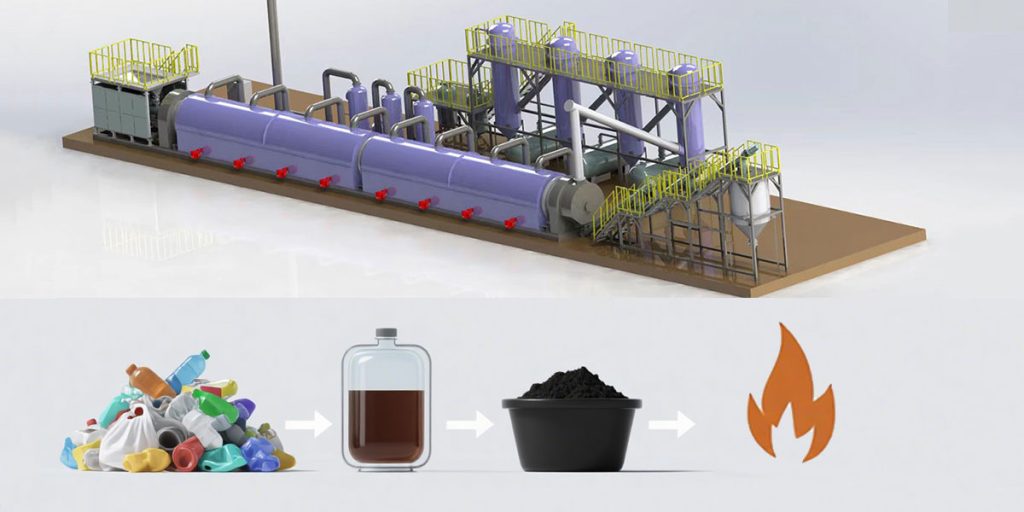
In terms of resource utilization, pyrolysis plant for waste plastic achieves resource recycling. Plastic pyrolysis oil can be used as fuel or chemical feedstock to produce new plastics or other products, thereby reducing dependence on fossil resources.
For example, LyondellBasell uses plastic pyrolysis plant to convert mixed plastic waste into pyrolysis oil and syngas, which is then used to produce recycled plastics, achieving a closed-loop utilization of plastic resources. This resource recycling model helps promote the transition to a circular economy, improve resource utilization efficiency, and reduce resource waste.
From an economic development perspective, pyrolysis plant for waste plastic creates numerous local job opportunities. Both during the plant construction phase and during subsequent operations and maintenance, they require a large number of specialized technicians and general workers.
For example, Clean-Seas’ West Virginia pyrolysis plant for waste plastic initially created over 40 high-paying jobs. As it expands, it is expected to create over 100 full-time jobs, significantly boosting local employment and economic growth. Furthermore, the development of plastic pyrolysis plants has driven the growth of related upstream and downstream industries, forming a complete industrial chain and further promoting economic prosperity.

